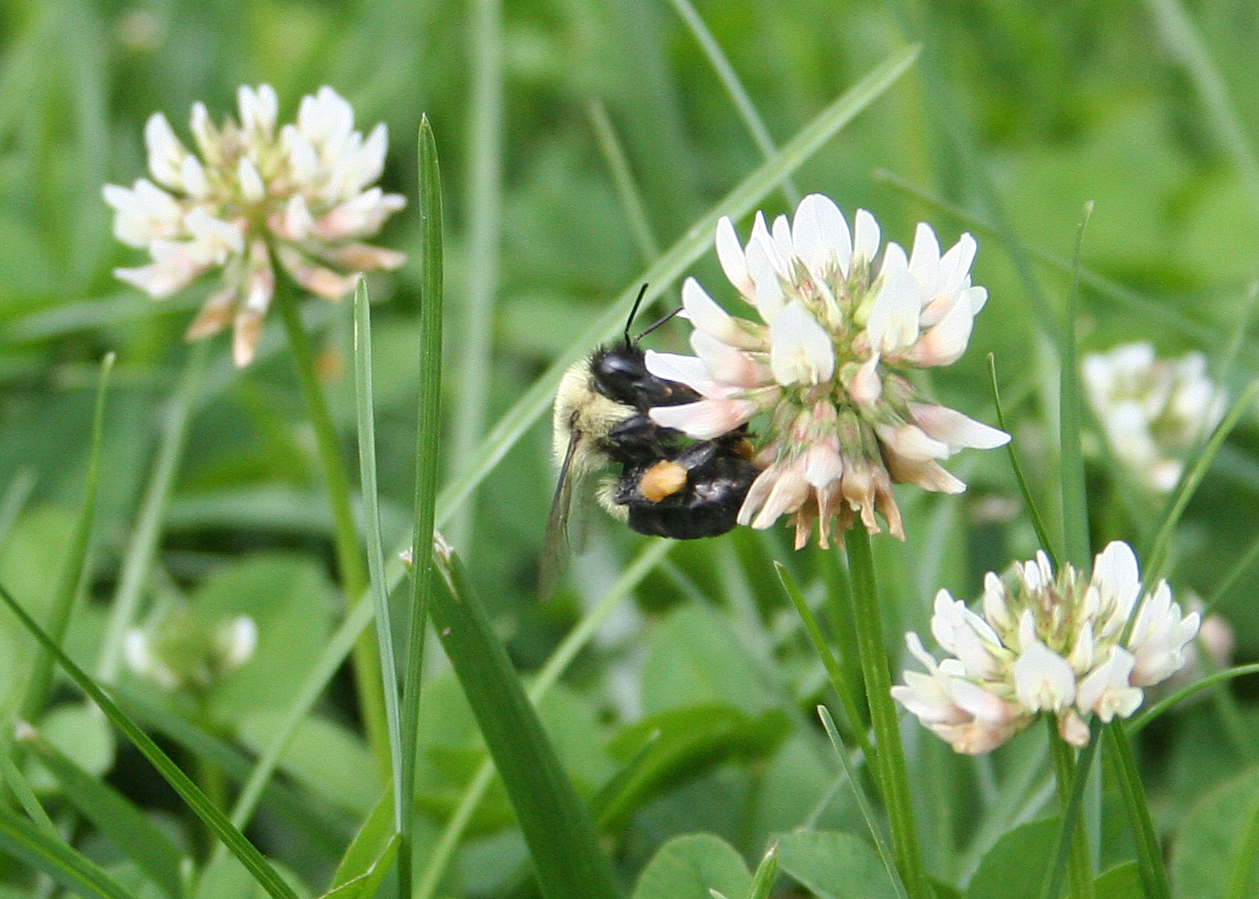It is important to minimize the impacts of pesticides on bees and beneficial arthropods. Pesticide applicators must use appropriate tools to help manage pests while safeguarding pollinators, the environment, and humans. As detailed in the NYS Pollinator Protection Plan, the state has committed to IPM on state lands “by managing pests on turf and ornamental plants solely through mechanical, sanitary, cultural or biological means to the maximum extent practicable” while recognizing that pesticide use is necessary under certain circumstances.
Superintendents can utilize IPM best management practices for turf that protect pollinators by following these simple steps:
- Identifying what is truly a pest. (E.g., while solitary ground nesting bees and wasps might be alarming, most are harmless.)
- Setting higher weed thresholds in low-use areas.
- Monitoring bee activity to avoid applying pesticides during peak activity times.
When the use of pesticides is necessary, being mindful of pollinators requires focusing on minimizing exposure to non-target pollinators in play and non-play course areas.

BMP Statements
- Follow label information directing the application of pesticide when the plant may be in bloom and follow all BMPs to avoid impacting pollinators.
- Inform nearby beekeepers in advance of applying pesticides so they have the option of moving their hives.
- Use drift reduction methods to stay on target by using the latest spray technologies, such as drift-reduction nozzles to prevent off-site translocation of pesticide, use backpack sprayers when possible, and monitor wind to reduce drift.
- Do not apply pesticides when pollinators are active. (Spray at night or in early morning/late evening and when air is calm.)
- Before applying a pesticide, scout the area for both harmful and beneficial insect populations, and use pesticides only when populations present exceed a damage threshold.
- If flowering weeds are prevalent, mow or remove them before applying pesticides.
- Use pesticides that have a lower impact on pollinators.
- Avoid applications during unusually low temperatures or when dew is present or forecast.
- When possible, use spray or granular formulations of pesticides that are known to be less hazardous to bees (e.g., wettable powders).
- Reduce planting dust from treated seeds: Use wax treated seeds, use deflectors on machinery, and be aware of dry/windy conditions.
- Follow irrigation instructions carefully to ensure pesticides are washed from foliage into soil. In addition, non-ionic surfactant can help reduce the potential for drift.
- Consider the use of biologicals (e.g., entomopathogens) and bio-based lures, baits, and pheromones as alternatives to insecticides for pest management.
